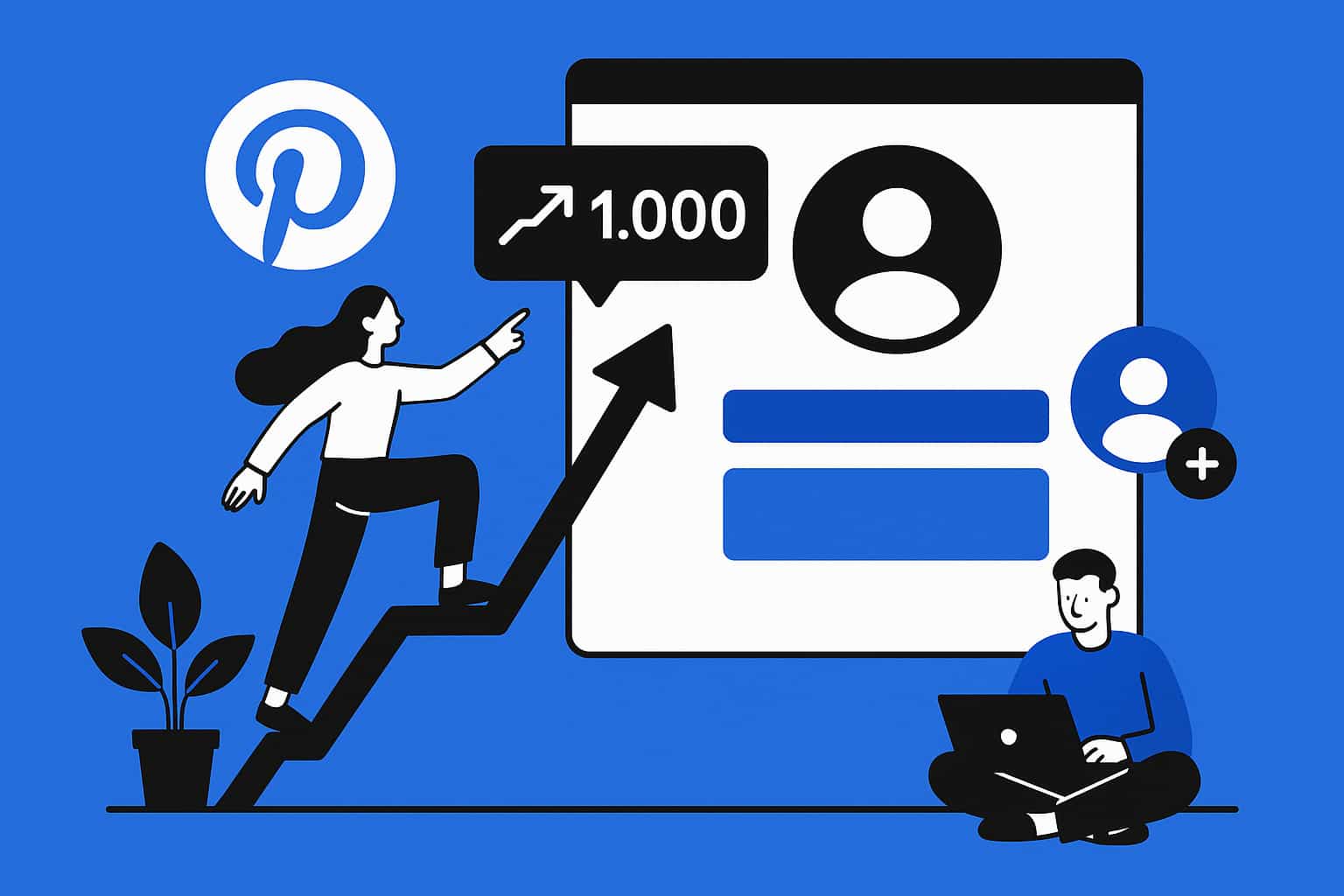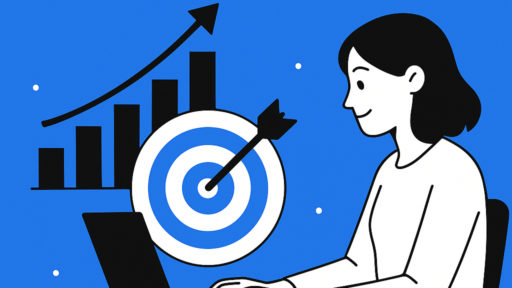Proven Tips to Boost Your Pinterest Follower Count
Picture this: you’re scrolling through Pinterest at 2 AM (we’ve all been there), and suddenly you stumble upon a profile with millions of followers. Meanwhile, your own Pinterest account is sitting there looking lonelier than a single sock in the dryer. Sound familiar? Here’s the thing – getting more Pinterest followers isn’t just about pretty pictures and wishful thinking. It’s about understanding how this visual search engine actually works and giving your audience exactly what they’re craving.
Pinterest isn’t just another social media platform where you post and pray. It’s a visual discovery engine where follower count can directly impact the reach and engagement of your content, increasing website traffic, brand awareness, and potential sales (Source: Tailwind Blog). We’re talking about a platform where users actively search for solutions, ideas, and inspiration – which means your content has serious staying power if you play your cards right.
Ready to transform your Pinterest game from “meh” to “magnificent”? We’re about to walk you through the exact strategies that’ll help you build a following that actually engages with your content. No fluff, no outdated tactics that stopped working in 2019 – just proven methods that work right now.
Optimize Your Pinterest Profile Like a Pro
Your Pinterest profile is your digital storefront, and let’s be honest – first impressions matter more than your high school guidance counselor led you to believe. When someone lands on your profile, you’ve got about three seconds to convince them you’re worth following. No pressure, right?
Start with strategic keywords in your profile name and bio to improve discoverability in search results (Source: Tintero Creative). Think about what your ideal followers would actually type into the search bar. If you’re a food blogger, don’t just say “food lover” – be specific like “Quick weeknight dinner recipes | Meal prep expert | Busy parent kitchen hacks.”
Your bio needs to work harder than a barista during morning rush hour. Craft a concise, keyword-rich bio that clearly communicates what you offer to attract the right audience (Source: Tintero Creative). Skip the generic “passionate about life” nonsense and get straight to the value you provide.
Here’s a pro tip that many people overlook: claim your website on Pinterest for added credibility and access to analytics tools that help refine your strategy (Source: Tintero Creative). This little verification badge acts like a trust signal, plus you’ll unlock Pinterest Analytics – your new best friend for understanding what’s actually working. For those looking to maximize their social media efforts across multiple platforms, our comprehensive guide on increasing social media presence offers valuable insights that complement your Pinterest strategy.
| Profile Element | Best Practice | Common Mistake |
|---|---|---|
| Profile Name | Include primary keyword (e.g., “Sarah | Healthy Recipe Ideas”) | Using only your personal name |
| Bio | Clear value proposition with keywords | Vague descriptions like “lover of life” |
| Profile Photo | High-quality headshot or logo | Blurry or low-resolution images |
| Website Verification | Always claim and verify your site | Skipping verification entirely |
Master the Art of Content Creation
Here’s where things get interesting. Most people think Pinterest success is about repinning other people’s content until something sticks. Wrong! Focus on creating original Pins, as over 90% of traffic comes from new content rather than re-pins or saves of existing Pins (Source: Tailwind Blog). That’s not a typo – original content absolutely dominates on this platform.
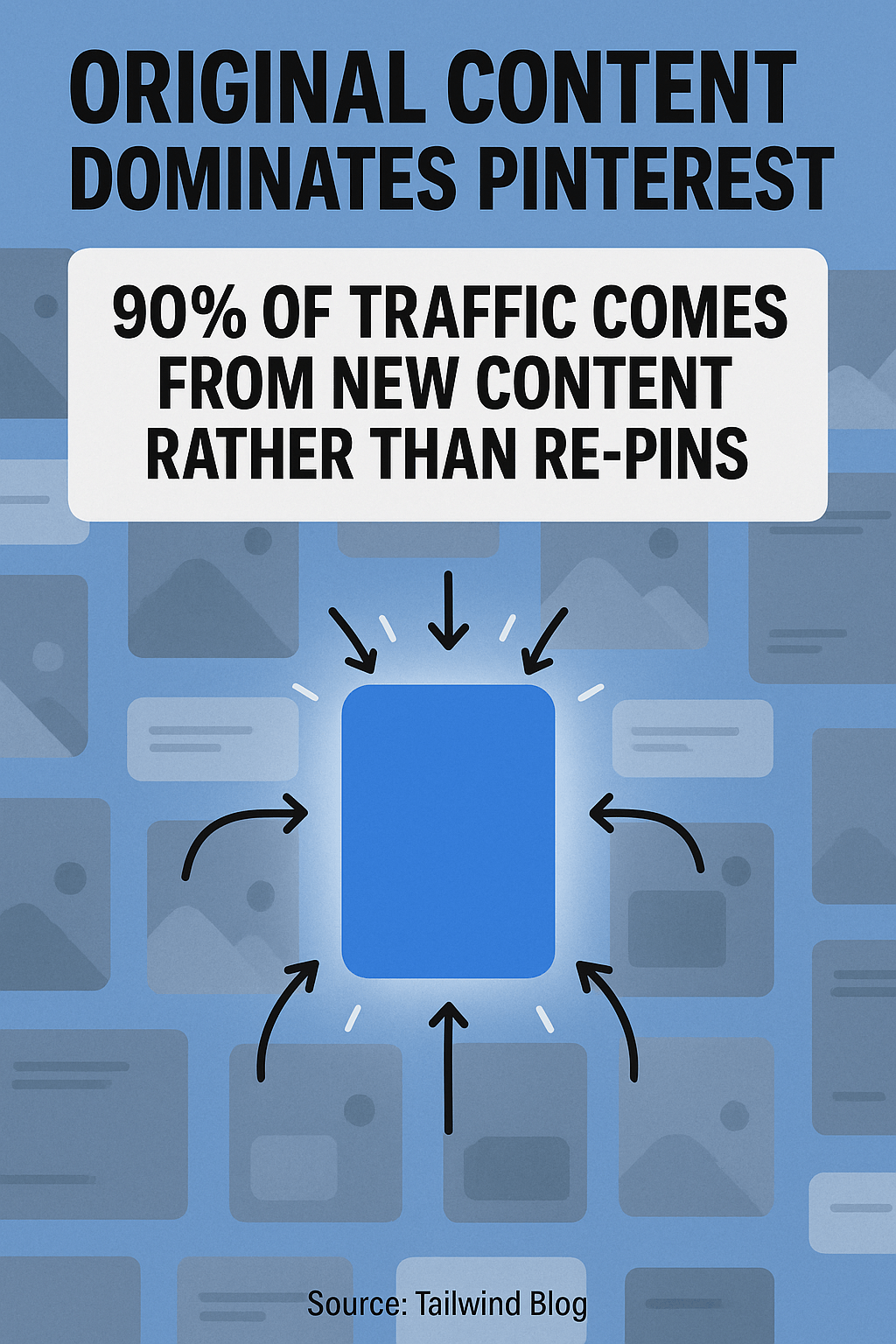
Your pins need to stop the scroll, and that starts with making them visually irresistible. Design high-resolution vertical images with a 2:3 aspect ratio (think 1000 x 1500 pixels) because they perform best and stand out in feeds (Source: Hollyland). Pinterest users are scrolling fast, so your pin needs to grab attention immediately.
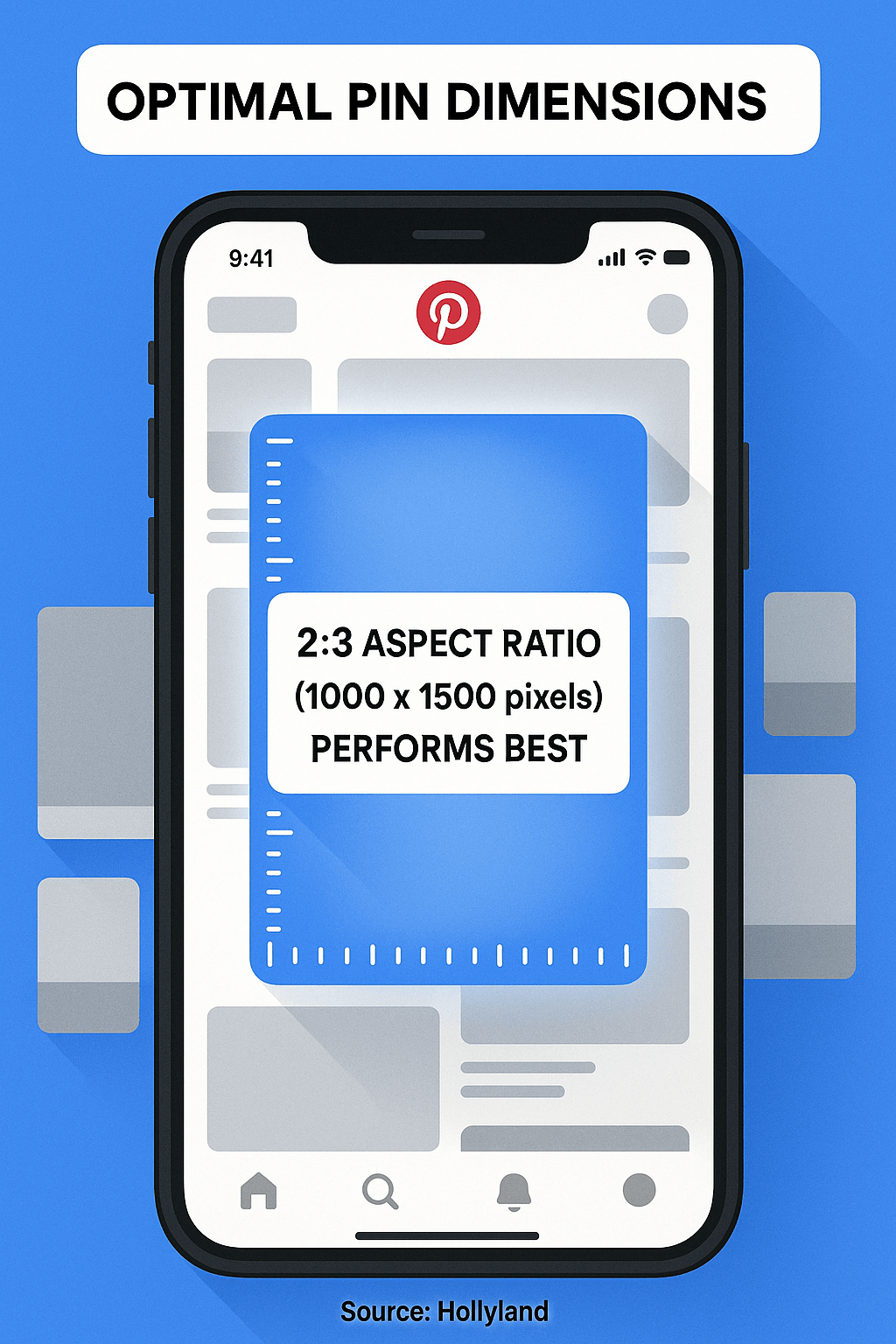
Text overlays are your secret weapon here. Add clear text overlays using bold fonts to make Pins more informative, but keep text concise for quick readability while scrolling (Source: Hollyland). Think of your text overlay as a mini headline that promises value or solves a problem.
When it comes to content variety, successful Pinterest creators follow the 60/30/10 rule: 60% helpful content, 30% behind-the-scenes or personal content, and 10% promotional material. This approach keeps your audience engaged while building trust. If you’re struggling with fresh content ideas, consider repurposing your existing blog posts, transforming them into pinnable graphics that drive traffic back to your site.
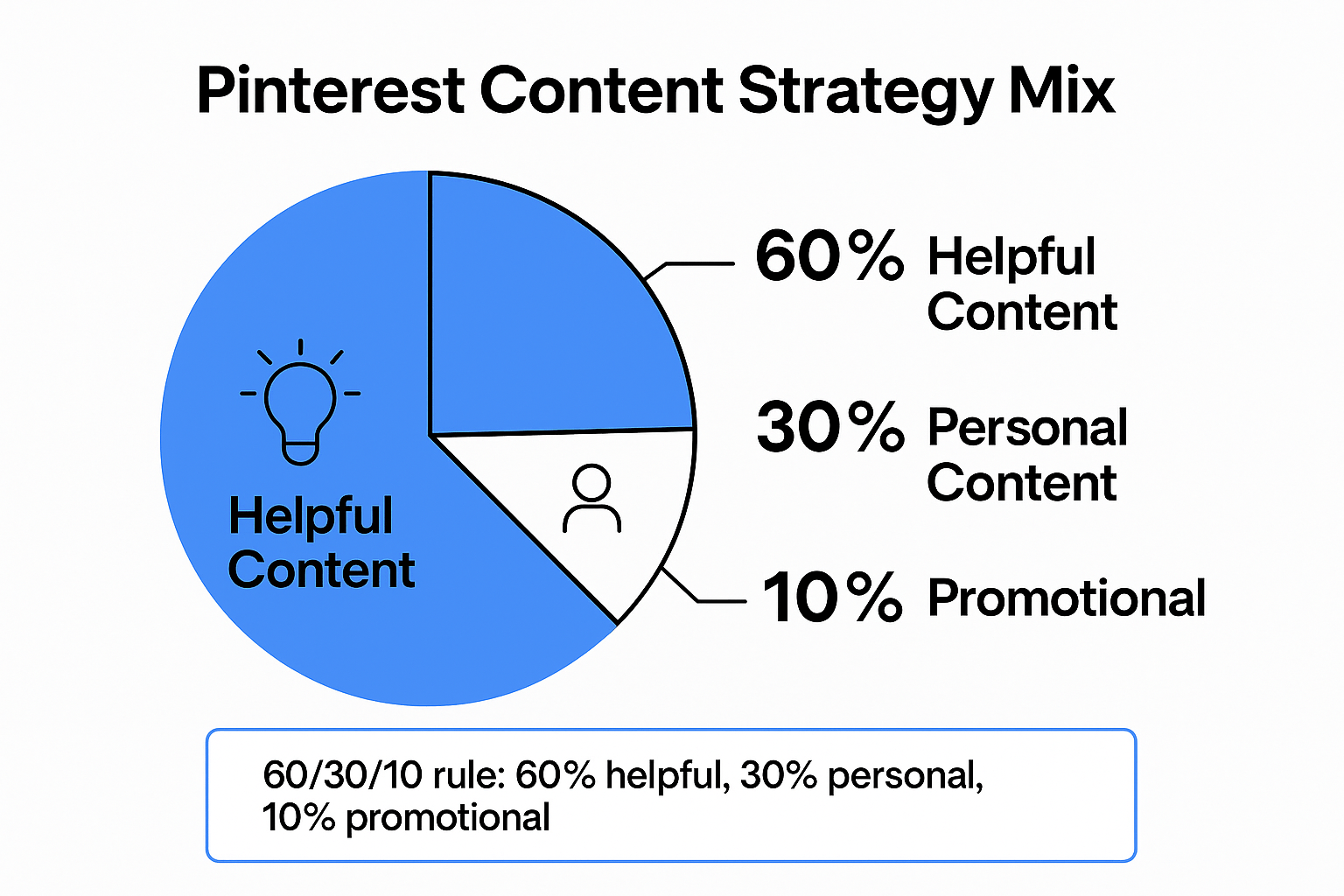
| Content Type | Optimal Dimensions | Best Use Case |
|---|---|---|
| Standard Pin | 1000 x 1500 pixels | Blog posts, tutorials, inspiration |
| Square Pin | 1000 x 1000 pixels | Product shots, quotes |
| Story Pin | 1080 x 1920 pixels | Step-by-step guides, multiple images |
| Video Pin | 1000 x 1500 pixels | How-to content, product demos |
Strategic Board Management
Your Pinterest boards are like the sections of a well-organized magazine – they need to make sense to both users and Pinterest’s algorithm. Here’s where many creators shoot themselves in the foot: they get too creative with board names and forget that Pinterest is essentially a search engine.
Name boards with relevant keywords instead of only creative titles because this boosts board discoverability through Pinterest’s search functionality (Source: Tintero Creative). Sure, “Autumn Vibes and Cozy Things” sounds cute, but “Fall Home Decor Ideas” will actually get found by people searching for that content.

Make sure all boards are set to public and regularly updated with fresh content related to their themes for ongoing engagement. Secret boards don’t help anyone find you, and Pinterest rewards active boards with better visibility. Aim to add at least one new pin to each board every week to keep them fresh and relevant.
Here’s a board organization strategy that works: create a mix of broad appeal boards (like “Healthy Dinner Ideas”) and niche-specific boards (like “30-Minute Vegetarian Meals”). This approach helps you capture both general interest and specific search queries. Learning from successful follower growth case studies can provide additional insights into building engaged communities across different platforms.
- Create boards around your main content pillars
- Use keyword-rich board names that people actually search for
- Write detailed board descriptions with relevant keywords
- Pin consistently to keep boards active and engaging
- Organize boards by importance, featuring your best content first
Writing Pinterest-Optimized Pin Descriptions
This is where the magic happens, and honestly, where most people completely drop the ball. Your pin descriptions are basically your elevator pitch to Pinterest’s algorithm and your potential followers. Get this right, and you’ll see your reach explode.
Write strategic Pin titles up to 100 characters using target keywords so they appear in relevant searches, but prioritize clarity over creativity (Source: Tintero Creative). Your title should immediately tell people what they’ll get if they click through.
Pin descriptions should be up to 500 characters, but here’s the kicker – front-load important information within the first 50-60 characters since that’s what users see first in their feed (Source: Hollyland). Include calls-to-action like “Save this pin” or “Visit our website” for higher engagement rates.
Don’t forget about alt text! Use keyword-rich alt text describing each image – this not only helps SEO but also improves accessibility for visually impaired users by providing context about the image’s content (Source: Tintero Creative). It’s a small detail that makes a big difference in discoverability.
For businesses looking to streamline their Pinterest marketing efforts, understanding successful social media engagement strategies can help you create more compelling descriptions that drive both saves and clicks.
| Description Element | Character Limit | SEO Impact |
|---|---|---|
| Pin Title | 100 characters | High – appears in search results |
| Pin Description | 500 characters | High – searchable content |
| Alt Text | No limit | Medium – accessibility + SEO |
| Board Description | 500 characters | Medium – context for algorithm |
Consistency and Scheduling Strategies
Consistency on Pinterest isn’t just about posting regularly – it’s about showing up in a way that builds momentum over time. Think of it like watering a plant: sporadic floods followed by droughts won’t cut it. You need steady, reliable care to see growth.
Consistently publish new Pins rather than relying solely on re-pinning others’ content. When you use scheduling tools like Tailwind strategically, you can increase traffic by up to 54% by posting at optimal times based on audience activity data from your account analytics (Source: Tailwind Blog).
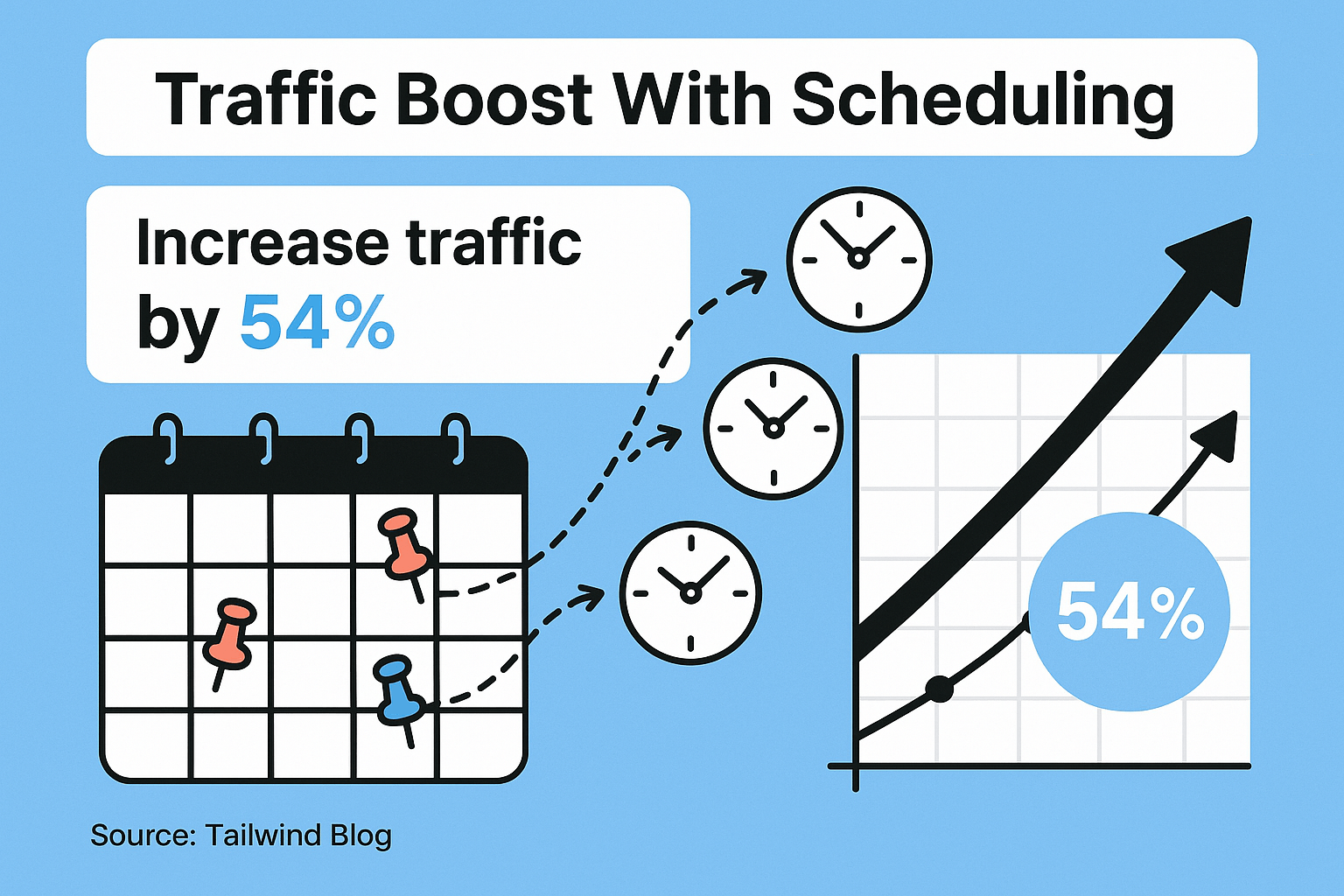
Here’s what “consistent” actually means in Pinterest terms: aim for 5-10 fresh pins per day, with a mix of your own content and relevant repins. Don’t panic – you don’t need to create 10 original pins daily. You can create 2-3 original pins per week and supplement with strategic repins of content that aligns with your brand and audience interests.
The key is finding your rhythm and sticking to it. Pinterest rewards accounts that maintain steady activity over time. If you’re managing Pinterest alongside other social platforms, consider using automation tools to maintain consistency without burning out.
- Schedule pins during peak engagement hours (typically 8-11 PM)
- Spread your pins throughout the day rather than posting all at once
- Use Pinterest Analytics to identify when your audience is most active
- Create a content calendar to plan seasonal and trending topics
- Set up automated pinning for consistent presence without manual effort
Advanced Engagement Tactics
Now we’re getting into the good stuff – the strategies that separate the Pinterest pros from the casual pinners. These tactics focus on creating genuine connections and building a community around your content.
Tell stories or evoke emotions within Pin descriptions because content that resonates emotionally tends to get more saves and shares, boosting visibility organically (Source: Hollyland). Don’t just describe what’s in the pin – explain why it matters to your audience’s life.
Engage meaningfully with other creators in your niche. Comment thoughtfully on pins, follow accounts that align with your brand values, and participate in group boards where appropriate. This isn’t about gaming the system – it’s about building genuine relationships that lead to mutual support and growth.
Use Pinterest Trends tool (where available) for real-time keyword research so you can create timely pins around trending topics within your niche (Source: Tailwind Blog). This feature helps you stay ahead of seasonal trends and capitalize on emerging interests in your industry.
Taking inspiration from other successful social media engagement strategies can help you create more interactive and compelling Pinterest content that drives both engagement and follower growth.
| Engagement Strategy | Time Investment | Expected Results |
|---|---|---|
| Daily commenting | 15-20 minutes | Increased visibility and reciprocal engagement |
| Group board participation | 30 minutes weekly | Expanded reach and new followers |
| Trend research | 1 hour weekly | Higher pin performance and relevance |
| Community building | 10 minutes daily | Loyal follower base and brand advocates |
Common Mistakes That Kill Pinterest Growth
Let’s talk about the Pinterest mistakes that make us want to hide under our desks. These are the growth killers that can tank your efforts faster than you can say “pin it.” The good news? Once you know what to avoid, you can course-correct quickly.
Don’t neglect keyword optimization across all elements: profile, boards, pin titles, descriptions, and alt-text. Missing these reduces discoverability significantly (Source: Metricool). It’s like having a beautiful store with no signs – people can’t find you even if they’re looking for exactly what you offer.
Avoid horizontal images – they’re less likely to be featured prominently compared with vertical formats favored by both users and algorithms (Source: Hollyland). Pinterest is a vertical platform, and fighting against that is like swimming upstream in lead boots.
Stop treating Pinterest like other social media platforms. It’s not about going viral with a single post – it’s about creating evergreen content that continues to drive traffic months or even years later. Many creators fail because they apply Instagram or Facebook strategies to Pinterest, which simply doesn’t work.
- Posting inconsistently or in irregular bursts
- Using low-quality or poorly designed pin images
- Ignoring Pinterest Analytics and audience insights
- Over-promoting without providing value
- Not engaging with the Pinterest community
Tools and Resources for Pinterest Success
The right tools can transform your Pinterest game from frustrating to fulfilling. While you don’t need every tool under the sun, having a few key resources in your toolkit will save you time and amplify your results.
Utilize scheduling platforms such as Tailwind not just for automation but also data-driven recommendations about best posting times tailored specifically for your audience’s behavior patterns (Source: Tailwind Blog). This isn’t just about convenience – it’s about optimization.
For design, tools like Canva offer Pinterest-specific templates that take the guesswork out of creating perfectly sized pins. Their drag-and-drop interface makes it easy to maintain brand consistency across all your pins.
Don’t sleep on Pinterest’s native analytics. Pinterest Analytics provides insights into your audience demographics, peak activity times, and top-performing content. Use this data to refine your strategy and double down on what’s working. For businesses managing multiple social platforms, implementing a comprehensive social media strategy can help you maintain consistency across all channels while maximizing Pinterest’s unique opportunities.
| Tool Category | Recommended Tools | Key Features |
|---|---|---|
| Scheduling | Tailwind, Later, Buffer | Automated posting, analytics, optimal timing |
| Design | Canva, Adobe Creative Suite | Templates, brand consistency, batch creation |
| Analytics | Pinterest Analytics, Google Analytics | Performance tracking, audience insights |
| Keyword Research | Pinterest Trends, Ubersuggest | Trending topics, search volume data |
Putting It All Together: Your Pinterest Growth Action Plan
Alright, we’ve covered a lot of ground here, and your head might be spinning faster than a Pinterest feed on Black Friday. But here’s the thing – you don’t need to implement everything at once. Success on Pinterest is more like a marathon than a sprint, and trying to do everything simultaneously is a recipe for burnout.
Start with the fundamentals: optimize your profile, create a handful of keyword-rich boards, and commit to pinning consistently for at least 30 days. Focus on creating 2-3 original pins per week while strategically repinning content that aligns with your brand. Track your progress using Pinterest Analytics, and don’t get discouraged if you don’t see immediate results – Pinterest growth often takes 3-6 months to really gain momentum.
The most successful Pinterest creators treat it as a long-term investment rather than a quick fix. They understand that each pin is a tiny seed that could grow into steady traffic for months or years to come. That’s the beauty of Pinterest – unlike other social platforms where content disappears into the void after 24 hours, your pins continue working for you long after you’ve posted them.
Remember, building a meaningful Pinterest following isn’t about gaming the system or finding shortcuts. It’s about consistently providing value to your audience and optimizing your content for both users and Pinterest’s search algorithm. Stick with these strategies, stay patient, and watch your Pinterest presence transform from crickets to conversation.
Ready to put these strategies into action? Start with one tactic that resonates most with your current situation, implement it consistently for 30 days, then gradually add more strategies to your Pinterest toolkit. Your future self (and your website traffic) will thank you!
